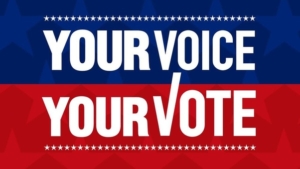Michael E. Chapnick, Daily Business Review
June 22, 2015
The new electronic voting law for community associations that was passed during this year’s legislative session and will go into effect on July 1 offers significant advantages for associations and their boards of directors. Without question, it is an idea whose time has come.
Properly implemented, electronic voting may enable associations to overcome the significant challenges created by so many investor-owned units and part-time residents who frequently do not participate in association votes, making it difficult for many associations to achieve quorum at members’ meetings and elections so that membership action can be taken.
However, there are some important and necessary measures that were built into the new law which will make the initial implementation of electronic voting extremely challenging for many associations.
With the voter identity verification and security protocols that are called for under the new law, online voting for associations will not be as simple as using an existing off-the-shelf electronic survey provider and adapting it for an association vote.
In fact, the vetting process for the vendors purporting to comply with all of the requirements under the new law will take some time, and the state’s Department of Business and Professional Regulation Division of Condominiums should move quickly to develop a vetting and certification process in order to help all of the associations in Florida to identify the providers that are in compliance with the statutory requirements.
The new law requires boards of directors that wish to adopt electronic voting to do so by passing a resolution to implement it at a duly-called membership meeting noticed at least 14 days in advance. The requirements for associations also include that they secure unit owners’ written consent to online voting, and that they put in place and utilize a method to authenticate the identity of the voter and ensure the secrecy and integrity of each ballot. Essentially, that is how the law attempts to replicate and adapt the “two-envelope” election ballot process and the manual check-ins that preceded the digital age.
Once the system is in place, the associations and their e-voting providers will need to test the system and confirm at least 14 days before the vote that the unit owners’ computers and devices are connecting and communicating with the system.
Technical Challenges
The new law stipulates that the e-voting systems must authenticate the identity of the voter as well as the integrity of the vote itself with the help of security measures to ensure that votes are not modified or altered in any way. The systems must also send receipts to the voters, and for association elections they must also separate the identity of the voter from the vote itself and maintain the votes accessible for future records inspections or election reviews.
These requirements for the electronic voting systems and their providers will create some technical challenges that will need to be overcome, and many community associations and their attorneys are now in the process of vetting these providers in order to determine whether they meet all of the stipulations required under the new law.
However, rather than leaving it up to every community association to conduct its own vetting process in order to determine which providers meet all of the law’s requirements, the onus should be on the state agency that oversees and enforces association election regulations as well as the other laws governing associations in Florida to create and implement a new vendor approval and certification process for the providers. The state’s Division of Condominiums is better equipped with the technical resources and expertise that is necessary to properly review and determine whether these online software application providers are implementing e-voting systems that meet all of the requirements and should be certified by the state for use by associations.
Electronic voting will not be a panacea for all of the issues caused by unit owner apathy and absenteeism in association votes and elections. There are many voters who will decline to use it and will wish to continue mailing in the completed ballots or voting in person at the meetings, so it is unlikely to completely replace the traditional voting methods, at least in the near future. It will, however, give the associations an important new tool for their toolbox that should greatly enhance their ability to conduct annual elections and obtain votes regarding alterations, amendments, reserves and other important association matters that require membership approval.
With the help of an effective approval and certification program for the e-voting system providers by the state, associations will be able to turn to electronic voting to help overcome some of the challenges that have plagued their votes and elections for decades.




